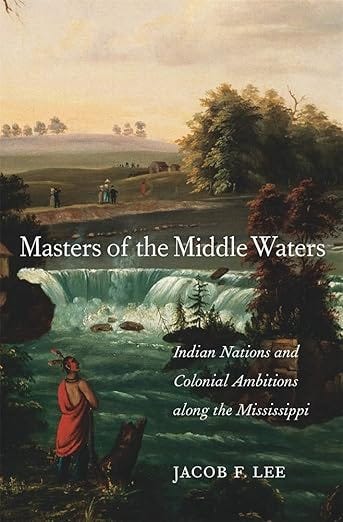When I was a kid, you could usually find me camped out on the couch next to my grandfather, especially late on summer evenings when the long days of working in the mussel shell business sent us to the den for a respite. We had one of the those huge antennas people had in those days, the kind you had to mow around and be careful not to nick with your weedeater. Grandaddy’s favorite channel was the Western Channel, filled with promos from Dennis Weaver and featuring no shortage of films starring John Wayne and Jimmy Stewart. “Who is Audie Murphy,” I’d ask, prompting my mother’s father for another story.
We watched lots of those movies in those days, usually with Grandaddy’s popcorn that he’d make on the stove himself—he wasn’t a fan of the microwave stuff, though he’d settle for it if he had to. Most of those westerns were set in Texas or New Mexico or Arizona—the high plains of High Plains Drifter. But one always stuck out: 1972’s Jeremiah Johnson, starring Robert Redford and directed by Sydney Pollack.
I always loved this film. I still believe it to be one of the most gorgeous works ever captured onscreen. For a boy from Kentucky, the mountains of Utah (where the film was shot), beckoned. And maybe there was a sense that this film nudged me ever so forward in my path to becoming a historian.
In a lot of ways, Jeremiah Johnson is one of the more fascinating “history” movies to talk about—it features a guy who really did live at one point and roughly follows his famed exploits in the wilderness. Of course, I say “roughly” because this movie does play fast and loose with history. I don’t necessarily have a hard time with this because as Ed Zwick reminds us, it is the job of the filmmaker to make decisions in order to relay the necessary truths of a story.
I think what it is interesting about the movie—and frankly many history movies—is that they are usually more interested in talking about the eras in which they are made. Jeremiah Johnson is no exception. Shot in 1971, the film’s cinematography calls to audience to think of an America before its industrial decay. Rachel Carson’s Silent Spring was released the previous decade, and I can’t help but think about that book’s influence on the production of this film.
There is a seductiveness to the story told in the movie: a tired warrior flees modern society, goes it alone, finds love and peace, has it stolen from him, and spends his remaining years fighting, which is what he fled all along. For a country in the midst of the Vietnam War, Jeremiah Johnson offered viewers the chance to think on the rugged individuality that built the nation, embodied by Robert Redford, perhaps the most handsome American alive.1
The problem is that so much of what we see and are told in Jeremiah Johnson is bunk. As our guest, Dr. Jacob Lee, explains, the movie is a construction of 1970s American idealism filtered through artificial memories in a way that pleases audiences seeking a nostalgic thrill.
Jacob would know. He’s written on Jeremiah Johnson before and is a historian of early America, focusing on the frontier. He’s also a fellow Kentuckian, albeit a Louisville fan, but he’s such a damn good human and scholar that we are going to let those indiscretions slide. Jacob’s work compelled me to ask him to be on the podcast to talk about a film that so many of us love.
About our guest:
Dr. Jacob Lee is a historian of early America and the American West, focusing on colonialism and borderlands. My first book, Masters of the Middle Waters: Indian Nations and Colonial Ambitions Along the Mississippi (Harvard University Press, 2019), embedded intertwined Native and imperial histories in the physical landscape of Middle America, a vast region encompassing much of the central Mississippi River valley. In the centuries between the collapse of the ancient metropolis of Cahokia around A.D. 1300 and the rise of the U.S. empire in the early 1800s, power flowed through the kinship-based alliances and social networks that controlled travel and communication along the many rivers of the midcontinent. Drawing on a range of English-, French-, Spanish-, and Illinois-language sources, as well as archaeology, oral history, and environmental science, Masters of the Middle Waters emphasized the power of personal relationships and the environment to shape the course of empires and nations.
He is currently working on a history of the everyday operation of legal jurisdiction in Indian Territory (present-day Oklahoma and Kansas) from the 1820s through the 1850s. Tentatively-titled The Laws of Nations: Legal Jurisdiction and the Struggle for Sovereignty in Indian Territory, this project examines the ways that Indigenous nations, especially Cherokee Nation and Osage Nation, effected sovereignty over people and land through the assertion and exercise of jurisdiction over crimes committed within their borders. In adjudicating crimes ranging from murder to theft to bootlegging, Native nations repaired harms, defined citizenship, and exercised authority in the face of the efforts of U.S. federal and state governments to usurp and undermine Indigenous governance.
Find Masters of the Middle Waters right here.
The Pod
This episode that I’m sharing with you today is from those days, and remains one of the deepest dives we’ve ever done on a film, and one of my favorite episodes we’ve ever done. I hope you enjoy. Links below.
Thanks for being here and being part of this community. More coming soon.
Jason
I know some of you will say Paul Newman. You have been heard.




This piece made me think of another movie about a lone man of the west resisting modern life, but it contemporary to when it was made. The movie is Lonely Are the Brave, one of my favorites.
Masters of the Middle Waters sounds great, and I know authors don't set the prices of their books, but $44 for an ebook is outrageous! And my local library doesn't have it.
Ebook prices should be similar to what the book would be in the (now defunct) mass-market paperback.
It's too bad, because I was looking forward to reading this book.